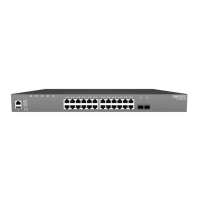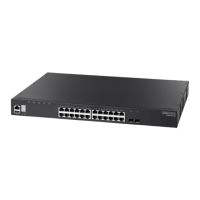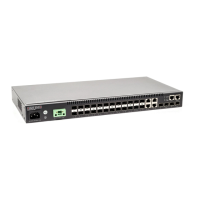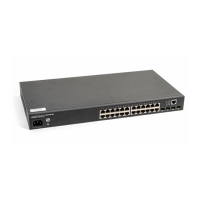Chapter 50
| IP Routing Commands
Policy-based Routing for BGP
– 1168 –
set extcommunity This command sets the extended community attributes of routing messages. Use
the no form to remove this entry from a route map.
Syntax
set extcommunity {rt extended-community-value |
soo extended-community-value}
no set extcommunity [rt | soo]
rt – The route target extended community attribute.
soo – The site of origin extended community attribute.
extended-community-value – The route target or site of origin in one of the
following formats:
AAAA:NN or AA:NNNN – Community-number to deny or permit. The
community number can either be formatted as a 4-byte autonomous
system number and a 2-byte network number, or as a 2-byte
autonomous system number and a 4-byte network number, separated
by one colon. Each 2-byte number can range from 0 to 65535, and 4-
byte numbers from 0 to 4294967295.
IP:NN – Community to deny or permit. The community number is
composed of a 4-byte IP address (representing the autonomous system
number) and a 2-byte network number, separated by one colon. The 2-
byte network number can range from 0 to 65535.
One or more community numbers can be entered, separated by a
space. Up to 3 community numbers are supported.
Command Mode
Route Map
Command Usage
◆ Using the rt keyword to specify new route targets replaces existing route
targets.
◆ The route target (RT) attribute is used to identify sites that may receive routes
tagged with a specific route target. Using this attribute allows that route to be
placed in per-site forwarding tables used for routing traffic received from the
corresponding sites.
◆ The site of origin (SOO) attribute is used to identify the site from which the
provider edge (PE) router learned the route. All routes learned from a particular
site are assigned the same site of origin attribute, no matter if a site is
connected to a single PE router or multiple PE routers. Filtering based on this
extended community attribute can prevent routing loops from occurring when
a site is multi-homed.

